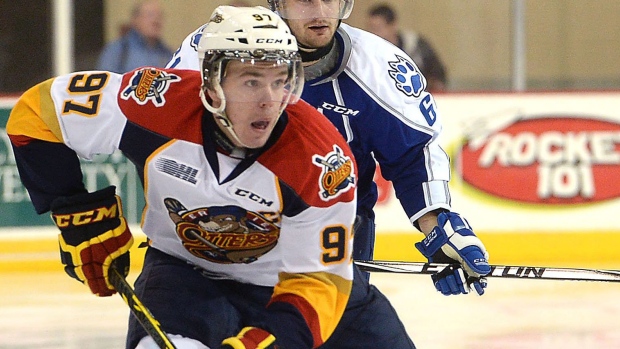Feb 12, 2015
Playing the percentages in the NHL Draft
The trade deadline offers one of the most exciting parts of the National Hockey League season. Teams are generally binned into buyers and sellers and Travis Yost checks out the value of draft picks, which will be most relevant as the sellers offer trade incentives to buyers.
By Travis Yost

The trade deadline offers one of the most exciting parts of the National Hockey League season. Teams are generally binned into buyers and sellers, with the first group looking for that integral piece to push them over the top, and the second group looking to collect future assets in the hopes of a brighter tomorrow.
Part of the reason why the trade deadline has become so divisive – and so intriguing for fan bases – is that teams are incentivized to be in one of those two groups. It’s a reality of a hard-cap, draft lottery-based league, which forces teams to be cost-cognizant with roster makeup, relying on younger and cheaper players to complement their well-paid stars.
As a byproduct of that, we often see draft picks exchanged in many of these trades. Draft picks are obviously not players, and by extension of that, not always the most exciting return in a given trade.
It’s for this reason that I’ve always thought about draft picks as something of a weighted lottery ticket. After all, the draft pick just gives the receiving team an opportunity to select one of innumerable available players in the designated round, and aside from a few teams at the poles, most franchises have had comparable success in the draft. And now, thanks to years of historical data, we can make reasonable estimates as to the probability of a draft pick ending up as an eventual NHL talent.
What I did was pull out every single draft pick from 2000-2009 (a 10-year span) based on the round they were selected, and binned the players into two groups: players who managed to log at least 50 career games at the NHL level (a reasonable way to identify players who, at worst, became replacement level NHL talent), and players who managed to log 0-49 NHL games at the NHL level (our way to identify a ‘failed’ draft pick).
How does the data shake out by round?

So, this is reasonably what we would expect. 80% of first-round picks, 44% of second-round picks, and 30% of third-round picks will become low-level (or better) NHL players. Scott Cullen has done great work looking at specific pick values.
The majority of those will realize something better than a few cups of coffee at the NHL level, of course.
What’s interesting is in the later rounds, the art of hitting on a draft pick seems to be entirely random. Round five, for example, only offers a 1.6% better chance that a player ends up as replacement level or better than a player selected in round seven.
The above numbers give us a crude idea as to what any single draft pick can offer in terms of a return. But, often times, we see trades in which a team acquires a pair of draft picks. In recent times, Brad Stuart was traded from the Colorado Avalanche to the San Jose Sharks for a second-round pick and a sixth-round pick, and Nate Thompson was traded from the Anaheim Ducks to the Tampa Bay Lightning for a fourth-round pick and a seventh-round pick.
Figuring out what a two-pick package can return in terms of a potential NHL talent is a valuable exercise, and it’s really just simple math. First, we can calculate the odds of any two-pick package turning out at least one NHL talent:

Here’s another argument as to why draft pick packages are so important to acquire. Let’s say you are in a position where you have a player on the roster who is a depreciating veteran asset, or a player on an expiring contract unlikely to extend his deal. Pairing up lottery tickets can create a very real chance at acquiring an NHL player, even in the event the picks acquired are mid/low level. And, of course, at the top of the food chain, we have some insanely likely probabilities – acquiring two first-round picks, for example, gives you roughly a 95% chance at obtaining an NHL player.
Now, let’s look at it through the lens of the optimist. What is the probability that both draft picks acquired turn out to be NHL players?

You’ll notice that the packages aren’t neatly ordered as they were in the initial graph. That’s because in this instance, we need both players to become NHL caliber. In this case, acquiring a package of two second round picks (19.4%) is better than, say, acquiring a first-round pick and fourth-round pick (16.7%).
All this said, I think it’s important to remember that not every scouting contingent or NHL front office operate on a level-playing field – there are teams that simply do it better than others, and that can skew the odds a bit. Even with that caveat, I still think it’s beneficial to treat each pick or picks like chances at winning a lottery. Once we start thinking of draft picks as ‘future NHL players’ instead of simple selections in a snake process, we’ll better recognize when a package is worth accepting, and when a package is worth rejecting.



